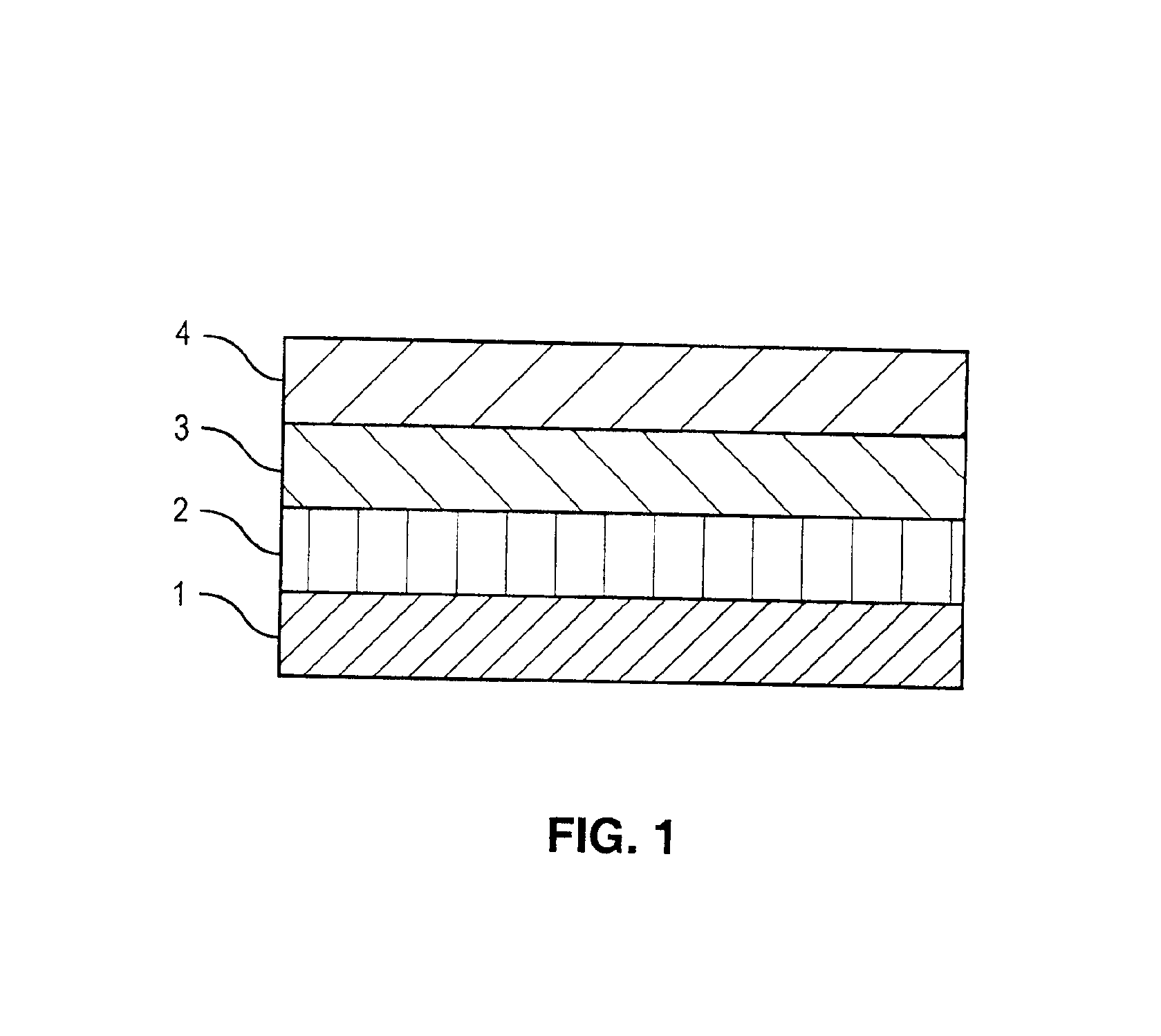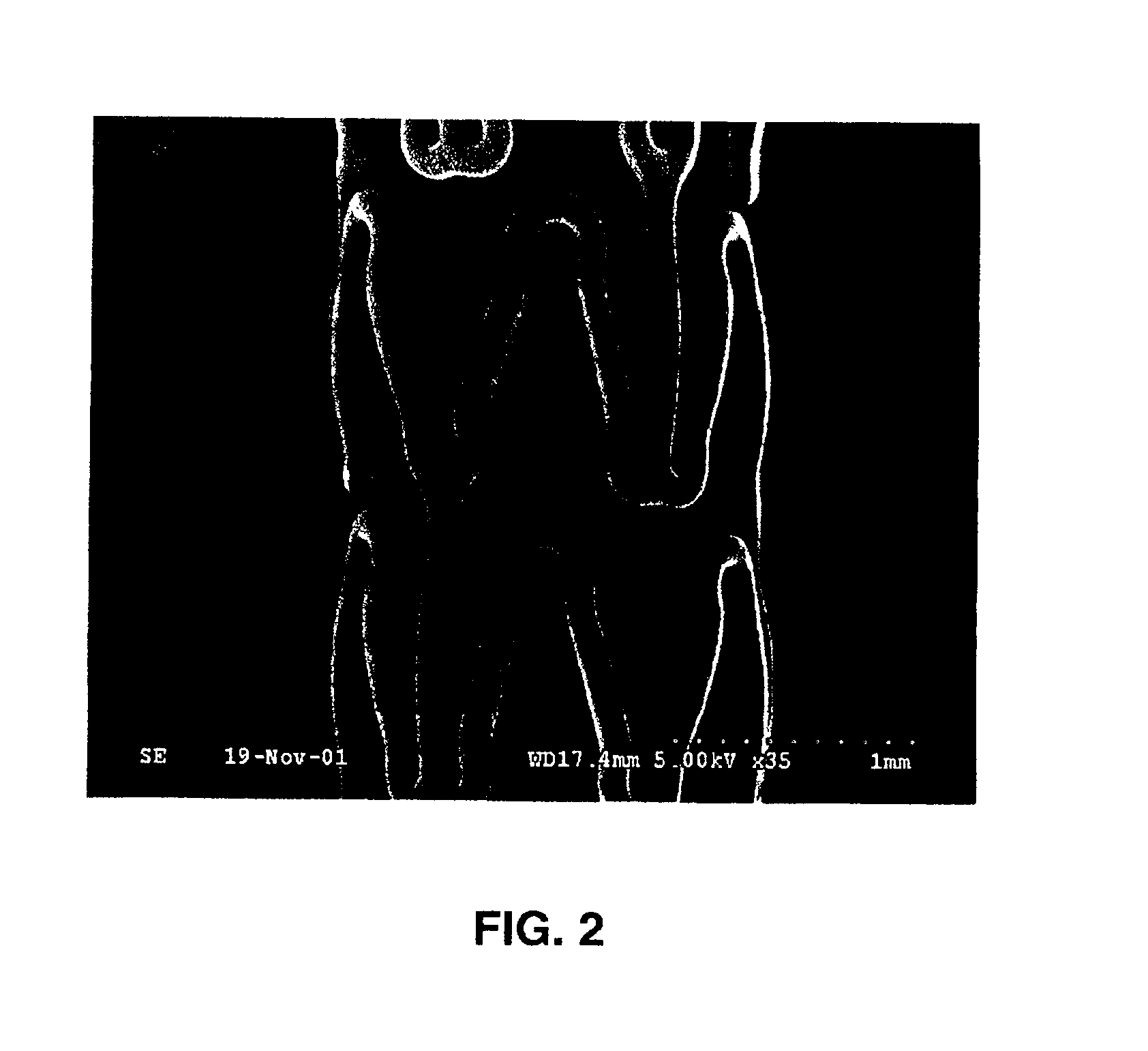Therapeutic composition and a method of coating implantable medical devices
a technology of medical devices and compositions, applied in the field of therapeutic compositions and a method of coating implantable medical devices, can solve the problems of intimal flaps or torn arterial linings which can collapse, thrombosis may develop, and occlude the conduit,
- Summary
- Abstract
- Description
- Claims
- Application Information
AI Technical Summary
Problems solved by technology
Method used
Image
Examples
example 1
[0032]About 1 milliliter (1.133 gram) of formamide was added to 0.1 gram of sodium heparin (NaHep) obtained from Aldrich Chemical Co. of Milwaukee, Wis. The suspension was heated at a temperature about 70° C. After about 5 minutes of heating, sodium heparin was fully dissolved in formamide to form about 8.1 mass % NaHep solution. About 0.15 gram of EVAL was dissolved in about 0.85 gram of dimethylacetamide (DMAC) to form 15% (mass) solution of EVAL. About 1 gram of the 15% EVAL solution was further dissolved in a mixture of about 2 grams of DMAC and about 1 gram of methyl alcohol. This final EVAL solution was added to the NaHep-formamide solution prepared above. The two solutions were thoroughly mixed to form a clear heparin-polymer (NaHep-EVAL) solution. The NaHep-EVAL solution had a solid content of about 4.8 mass % and the mass ratio of NaHep to EVAL of about 2:3.
[0033]At room temperature, the NaHep-EVAL solution was not sufficiently stable and developed substantial turbidity wit...
example 2
[0037]About 1 milliliter (1.133 gram) of formamide was added to about 0.1 gram of poly-L-arginine sulfate. The suspension was heated at a temperature of 50° C. After a few minutes of heating, PArg was fully dissolved in formamide to form about 8.1 mass % PArg solution. About 0.15 gram of EVAL was dissolved in about 0.85 gram of DMAC to form 15% (mass) solution of EVAL. About 1 gram of the 15% EVAL solution was further dissolved in a mixture of about 2 grains of DMAC and about 1 gram of methyl alcohol. This final EVAL solution was added to the PArg-formamide solution. The two solutions were thoroughly mixed to form the PArg-EVAL solution. The PArg-EVAL solution had a solid content of about 4.8 mass % and the mass ratio of PArg to EVAL of about 2:3.
[0038]At room temperature, the PArg-EVAL solution was not sufficiently stable and developed substantial turbidity within about 15 minutes after the mixing of the PArg-formamide solution with the EVAL solution. In order to avoid phase separa...
example 3
[0040]A drug-polymer layer containing NaHep-EVAL was formed on a stent according to the procedure described in Example 1. A 2% (mass) solution of EVAL in DMAC was prepared by mixing about 2 grams of EVAL and about 98 grams of DMAC. Using the process and equipment described in Example 1, the 2% EVAL solution was applied to an 8-mm TETRA stent coated with the NaHep-EVAL drug-polymer layer to form a topcoat layer. About 10 μg of & coating per spray pass was deposited. A total of about 33 μg of solid mass was applied as a topcoat layer followed by drying in a convection oven at about 70° C. for about 2 hours.
[0041]Using the process and equipment described in Example 1, the 2% EVAL solution was also applied to an 18-mm TETRA stent coated with the NaHep-EVAL drug-polymer layer to form a topcoat layer. About 20 μg of coating per spray pass was deposited. A total of about 120 μg of solid mass was applied as a topcoat layer followed by drying in a convection oven at about 70° C. for about 2 ...
PUM
| Property | Measurement | Unit |
|---|---|---|
| temperature | aaaaa | aaaaa |
| mass | aaaaa | aaaaa |
| mass | aaaaa | aaaaa |
Abstract
Description
Claims
Application Information
 Login to View More
Login to View More - R&D
- Intellectual Property
- Life Sciences
- Materials
- Tech Scout
- Unparalleled Data Quality
- Higher Quality Content
- 60% Fewer Hallucinations
Browse by: Latest US Patents, China's latest patents, Technical Efficacy Thesaurus, Application Domain, Technology Topic, Popular Technical Reports.
© 2025 PatSnap. All rights reserved.Legal|Privacy policy|Modern Slavery Act Transparency Statement|Sitemap|About US| Contact US: help@patsnap.com



